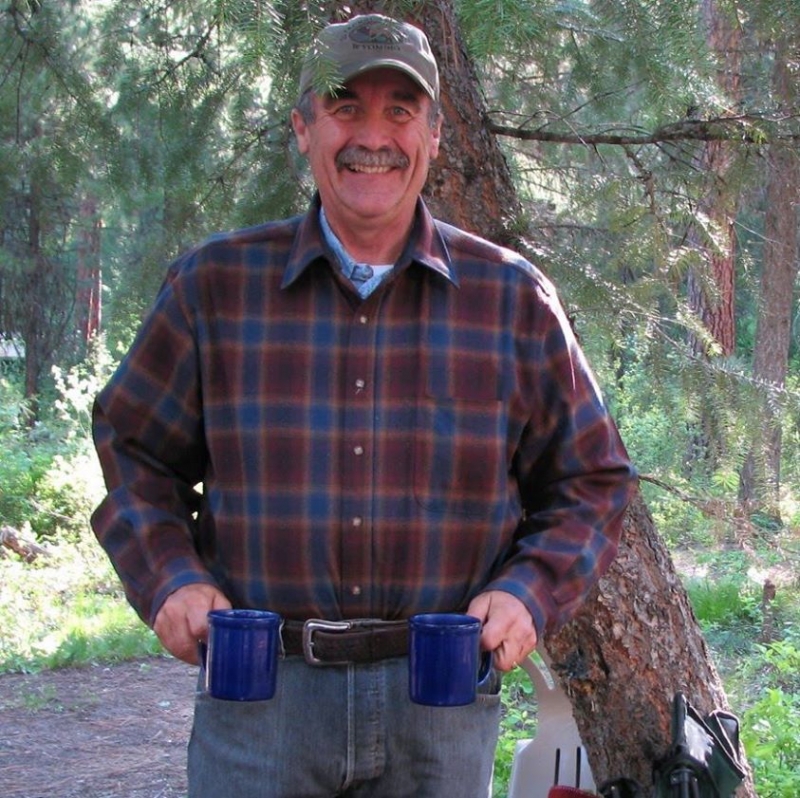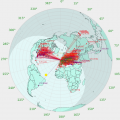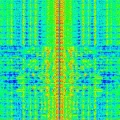KA7U
About
- Username
- KA7U
- Joined
- Visits
- 3,402
- Last Active
- Roles
- Member
- Points
- 3
-
v1.290/291/292 software updates
-
Setting Dispalyed Bandwidth
-
QSL Cards
RNZI was kind to send me a couple of email QSL cards!
eQSL web form for RNZI is: https://www.radionz.co.nz/international/qsl/new
Ron - KA7U

-
QSL Cards
RNZI was kind to send me a couple of email QSL cards!
eQSL web form for RNZI is: https://www.radionz.co.nz/international/qsl/new
Ron - KA7U

-
Help Needed: How can I access a remoted Kiwi somewhere in 169.254/16 ? [fixed in v1.254]
@n6gn
Glen, you no doubt have this accounted for, but I'll throw it into the mix. When the power comes back up, do you have a switch to prevent a low power start on the KiwiSDR? If the KiwiSDR startup voltage sags, it boots but doesn't complete the load and doesn't initiate the network. It just sits there until the power is recycled to it. So a mountain top needs a power reset switch to the KiwiSDR and probably a charged capacitor to account for initial current draw if the power supply isn't at full power.
Please disregard if this is accounted for.
Ron
KA7U -
Syllabic Voice Squelch
Syllabic squelch would be nice. Currently I set the Threshold in the AGC panel to subdue the noise floor and find that a minimal voice will be audible if the audio gain is turned up. It isn't as elegant, but probably misses less weak signals. The only voice squelch I have to use is a Micom2es and I find it requires a substantial signal to activate reliably. I've never been overly impressed with that radio though. I bet the KiwiSDR could produce better results. -
kiwid takes 100% CPU, occasionally starves system
-
LZ1AQ LNA and a 1.2 meter copper loop antenna.
Alain,
I have the commercial version LZ1AQ. It is not currently in service, but it works much like yours on a 120cm diameter x 1" copper pipe loop. I do not have LW broadcast stations, so MW are the ones that overload my antenna here. Generally, if the signal is less than -25dBm on the KiwiSDR spectrum scale, then it does not overload the KiwiSDR. I did not see the OV light on your station so I don't think you are not having overload, at least not at this time. Idid have the noise you are seeing above 9MHz. I changed the balun/power inserting board to one of my own, and the noise was greatly reduced, so I boxed that commercial balun board. Looking at it again, I wonder if it would benefit with more turns, like 14x10 for a 2:1 ratio. It might be worth a try.I notice spurs in the 20 MHz regions that are outstanding. These spurs seem to be produced by our networks and KiwiSDR network connection contributes to them. It was found by Nick W1NJC that setting the KiwiSDR to 10 base T speeds reduced the amplitude of these spurs. We did this with these software modifications:
213 apt-get install ethtool
220 vi /etc/rc.local
#!/bin/sh -e
#
# rc.local
#
# This script is executed at the end of each multiuser runlevel.
# Make sure that the script will "exit 0" on success or any other
# value on error.
#
# In order to enable or disable this script just change the execution
# bits.
#
# By default this script does nothing.
ethtool -s eth0 speed 10 duplex full
exit 0
221 reboot
If it works for you, the 60 KHz spaced spurs will be reduced. We also decided that the spurs are picked up by the antenna, so moving the antenna far away from the network and household noise sources was a great help. In my case 250 feet did reduce interference greatly.
I am using a DIY version of LZ1AQ amplifier and changed transistors to 2N5109 which were pair matched for hfe and the bias on each pair was checked for same voltage, thus improving the differential effect attenuating common mode noise. The commercial version has more gain, a higher noise floor, but I think better sensitivity from VLF on up, so even though the noise floor is higher, I think the SNR is generally better, but this is just an impression, I haven't worked it enough to know. Seems I've spent so much time working other noise problems that I haven't got around to critically comparing the amps. My DIY LZ1AQ amp lives at:
http://ka7u.no-ip.org:8074
Ron
KA7U -
LZ1AQ LNA and a 1.2 meter copper loop antenna.
A report on the ongoing experimenting with the home brew ZL1AQ loop amplifier and the commercial version. I have now made a total of 6 LZ1AQ amplifiers, 3 using matched 2N2222 transistors and 3 using 2N5109 transistors. I've experimented with single loops and dual loops in orthogonal planes like the image in G8JNJ's post above. According to my observations of the noise floor using the KiwiSDR, the amps using the 2N5109 transistors exhibit a better noise floor by a considerable margin, over 10dBm on 160 meters and observably more on the lower frequencies. Generally, the entire 30 MHz band spread is noticeably improved with the 2N5109 transistors. The 2N2222 transistors I used had a typical HFE of 214.
The commercial version that I purchased has considerably more gain than the DIY model but once again it also has a higher noise floor and the additional gain has required notch filters to reduce local high powered stations, that the DIY boards don't require, as they have less gain. The commercial board is very sensitive at VLF and is very nice with many options that make it ideal for a wider variety of antenna configurations.
I have two problems with the boards currently available at https://easyeda.com/doxnairobi/zl1aq-loop-amp-ron-morell , I used the 2N2222 footprint and it makes it a bit tight to use the 2N5109, and if you use a RJ45 socket that accepts cords horizontal to the board, it will be incorrect, so use the RJ45 socket that plugs in from the top. I might get around to changing these two issues... It takes me about 4 hours to make the amp and the balun RJ45 to BNC board. https://easyeda.com/doxnairobi/2-1_balun , and again, I've got the RJ45 plug backwards if you use a horizontal plug. There is nothing stopping you from modifying these boards before having them produced. The last order was $2.00 for 10 boards + shipping and the parts I ordered. The parts weren't much either. Mostly it just takes time to figure out how to do it and wait for them to show up.
I've worked with 4 different amp designs and I think the LZ1AQ is quite competitive with the other designs. Thanks to G8JNJ for recommending it.
Ron
KA7U -
LZ1AQ LNA and a 1.2 meter copper loop antenna.
A report on the ongoing experimenting with the home brew ZL1AQ loop amplifier and the commercial version. I have now made a total of 6 LZ1AQ amplifiers, 3 using matched 2N2222 transistors and 3 using 2N5109 transistors. I've experimented with single loops and dual loops in orthogonal planes like the image in G8JNJ's post above. According to my observations of the noise floor using the KiwiSDR, the amps using the 2N5109 transistors exhibit a better noise floor by a considerable margin, over 10dBm on 160 meters and observably more on the lower frequencies. Generally, the entire 30 MHz band spread is noticeably improved with the 2N5109 transistors. The 2N2222 transistors I used had a typical HFE of 214.
The commercial version that I purchased has considerably more gain than the DIY model but once again it also has a higher noise floor and the additional gain has required notch filters to reduce local high powered stations, that the DIY boards don't require, as they have less gain. The commercial board is very sensitive at VLF and is very nice with many options that make it ideal for a wider variety of antenna configurations.
I have two problems with the boards currently available at https://easyeda.com/doxnairobi/zl1aq-loop-amp-ron-morell , I used the 2N2222 footprint and it makes it a bit tight to use the 2N5109, and if you use a RJ45 socket that accepts cords horizontal to the board, it will be incorrect, so use the RJ45 socket that plugs in from the top. I might get around to changing these two issues... It takes me about 4 hours to make the amp and the balun RJ45 to BNC board. https://easyeda.com/doxnairobi/2-1_balun , and again, I've got the RJ45 plug backwards if you use a horizontal plug. There is nothing stopping you from modifying these boards before having them produced. The last order was $2.00 for 10 boards + shipping and the parts I ordered. The parts weren't much either. Mostly it just takes time to figure out how to do it and wait for them to show up.
I've worked with 4 different amp designs and I think the LZ1AQ is quite competitive with the other designs. Thanks to G8JNJ for recommending it.
Ron
KA7U








